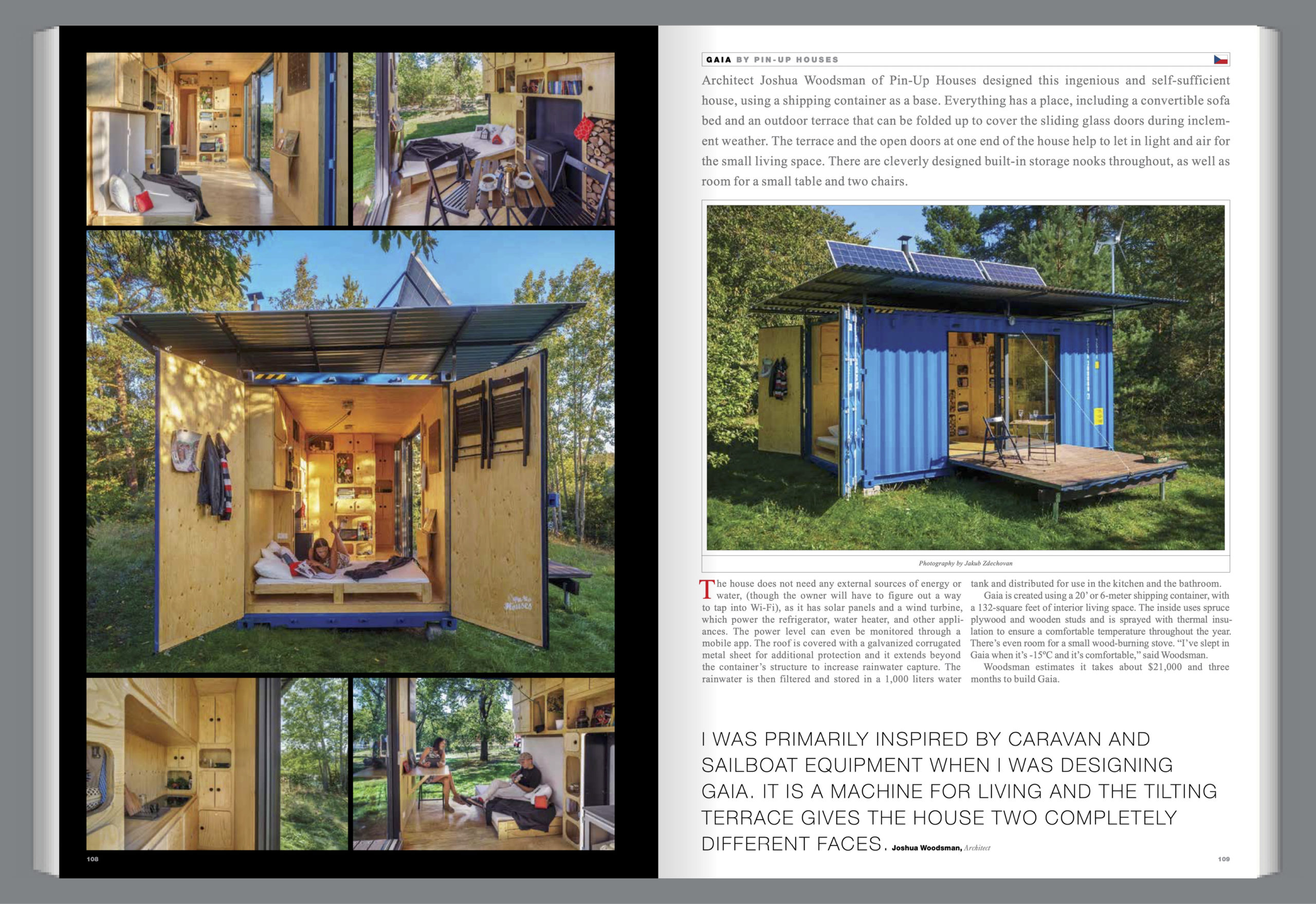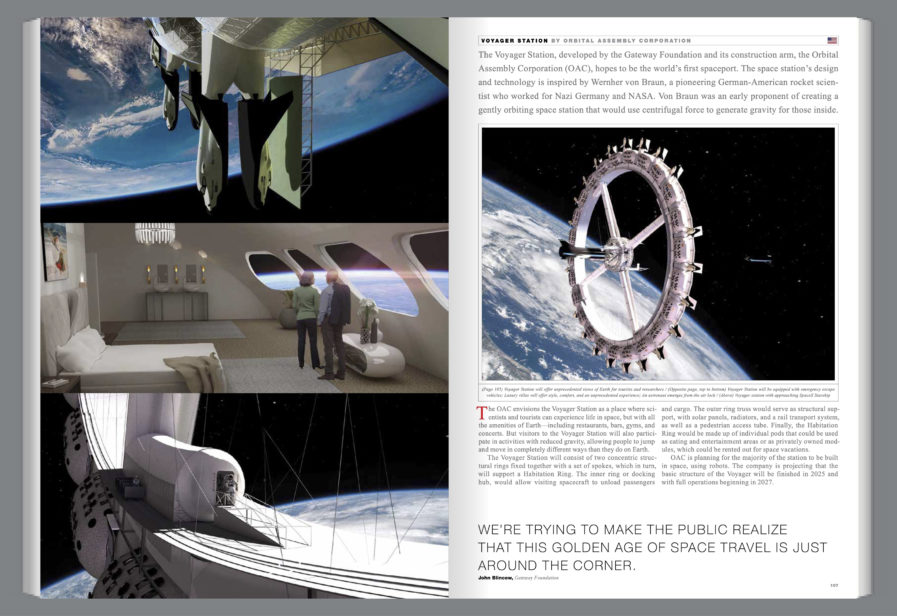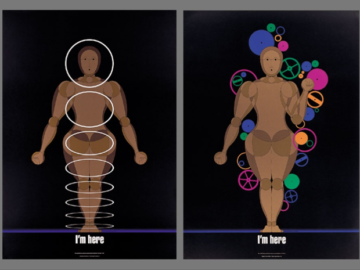With Graphis Journal #370 now available to pre-order, we celebrate our newest publication with two architectural marvels that will change where and how humans spend their time, one in outer space and the other back on earth.
The Voyager Station (above) was developed by the Gateway Foundation and the Orbital Assembly Corporation; it hopes to be the world’s first spaceport. Its design and technology are inspired by Wernher von Braun, a German-American rocket scientist who worked for both Nazi Germany and NASA. He was an early proponent of creating a gently orbiting space station that would use centrifugal force to generate gravity for those inside. The developers of the station envision it to be a place where both scientists and tourists can experience life in space while surrounded by all the amenities of Earth, including restaurants, bars, gyms, and concert venues. There will also be opportunities for those aboard to experience space with reduced gravity activities that will allow them to jump and move in ways that aren’t possible on Earth.
As for its structure, the Voyager Station will consist of two concentric structural rings fixed together with a set of spokes, which will support a Habitation Ring. The inner ring, or docking hub, would allow visiting spacecraft to unload passengers and cargo. The outer ring truss would serve as structural support with solar panels, radiators, a rail transport system, and a pedestrian access tube. The Habitation Ring would be made up of individual pods that could be used as eating and entertainment areas or privately owned modules that could be rented out for vacations. The Orbital Assembly Corporation said it’s planning for the majority of the station to be built in space using robots. They’re projecting that the basic structure will be finished in 2025, and will be fully operational in 2027.






